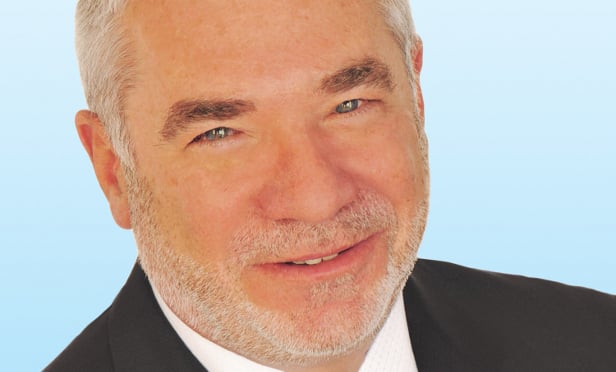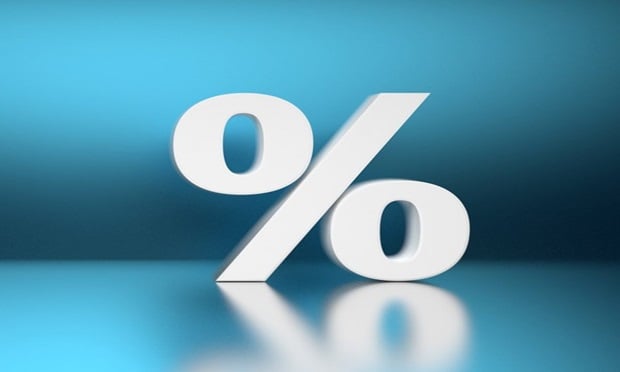
SAN FRANCISCO— While the commercial real estate markets remain strong, we're approaching the top of the cycle, with elevated pricing and some resistance from investors, Colliers International's chief economist Andrew Nelson tells GlobeSt.com. The firm recently released its US capital flows report, so we sat down with Nelson to discuss the takeaways and trends, as well as how certain sectors of the domestic market are faring. We also chatted with Colliers executive director Andrew Haskins, who heads up the company's research in Asia, for his take on commercial real estate investment in that region and from Asia into the US.
While the report showed the multifamily sector's strength domestically, Nelson says some of the luster is due to come off the star sector of the commercial real estate industry. “The long-term drivers are going to remain very strong, though I expect market fundamentals will weaken moderately over the next year or two,” Nelson says. “But that is from a point of exceptional strength, and frankly, prices and rents should come down a bit to make it more affordable for everyone. So, I see this new construction as ultimately healthy.”
“We're just beginning to see the first significant supply response to the new heightened demand for multifamily housing,” he continues. “Apartments have become a much more desirable asset class in this cycle, and I see this continuing in at least the intermediate term.” But with rent growth stalling and occupancy falling as the new supply hits, investor demand for multifamily is declining. “Indeed, based on preliminary first quarter 2017 data, apartments are showing the biggest fallback of any sector.”
Nelson says industrial is the sector of the moment, and has strong demand from both tenants and investors, but especially from investors since supply has been very limited. “Warehousing is the least expensive product to build, and for that reason we used to have a lot of merchant builders who could assemble low-cost land and put up product inexpensively.”
In this cycle, however, stricter underwriting standards have made that approach more challenging, so small builders have found it difficult to develop. Instead, REITs and other major players have been building for their own accounts and not selling. The supply is growing, but slowly.
“Compared to apartments and office and compared to prior cycles, when you see this level of tenant demand, you usually see a lot more supply coming online,” Nelson says. “But the supply has been pretty limited, driving down cap rates to some crazy numbers in places like Southern California's South Bay—we've seen prices we've never seen before.”
Nelson says e-commerce is a big part of the strong demand, as well as general economic growth and greater international trade. “The drivers for both tenant and investor demand in industrial are especially strong, but with limited product to buy, transaction volume in warehouses has lagged behind other sectors,” he says. “But now it's growing, both absolutely and as a share of all transactions. In fact, industrial is the only sector to show year-over-year gains in sales volumes during the first quarter of 2017.”
International investment demand is still strong, even from China, says Nelson. “China became the leading offshore investor in the US commercial real estate market for the first time last year. Demand is still strong, and we're getting mixed signals as to how much new constraints from Beijing will impact demand, but it seems likely there will be a pullback. But overall, there's a lot of money sitting on the sidelines waiting for the right product at historically high levels.”
In his recent report on Asian capital flows, Haskins said Chinese investment in property in other regions in recent years has been heavily focused on the US. “This push to the US has obscured rising intra-Asian property capital flows, which again exceed Asia-to-global flows,” he writes. “Despite firm near-term US economic prospects, we expect slower renminbi depreciation and political pressures to cause Chinese investment to shift toward Asian markets.” The report predicts the continued weight of capital should offset the likely-rising cost of funds, so that property yields on average stay flat across Asia this year. “We remain positive about Asian property, and see particular investment opportunities in China, Hong Kong, Singapore and India,” Haskins says.
He adds that it may be unrealistic to expect Asian property capital flows to reverse in 2017. Outflows should slow, but inflows may only rise slowly. “However, the question is now less relevant. Intra-Asian property investment is strong and rising, with China set to play a greater role. This trend should persist.”
Haskins sees Asia remaining firm, near-term. “US economic prospects imply continued dollar strength and may mean US investors keep capital at home. However, Chinese economic data has also been firm, and we think the renminbi will not fall much further. This may lower the attraction of US property to the Chinese.”
Nelson says the US is still viewed as a safe harbor for money coming out of emerging markets, and the US is still growing much faster than other developed nations such as Japan and the European countries. “With interest rates low and the dollar strong, demand drivers are robust in our property sectors because the economy is strong. There's still a healthy appetite from foreign buyers for US properties. Even if the buyer pool thins out among top-priced properties, we will still see solid offshore demand for US properties this year and into next. So far in 2017, we're seeing a significant pickup in offshore buying, while domestic sources continue to be net sellers.”

SAN FRANCISCO— While the commercial real estate markets remain strong, we're approaching the top of the cycle, with elevated pricing and some resistance from investors, Colliers International's chief economist Andrew Nelson tells GlobeSt.com. The firm recently released its US capital flows report, so we sat down with Nelson to discuss the takeaways and trends, as well as how certain sectors of the domestic market are faring. We also chatted with Colliers executive director Andrew Haskins, who heads up the company's research in Asia, for his take on commercial real estate investment in that region and from Asia into the US.
While the report showed the multifamily sector's strength domestically, Nelson says some of the luster is due to come off the star sector of the commercial real estate industry. “The long-term drivers are going to remain very strong, though I expect market fundamentals will weaken moderately over the next year or two,” Nelson says. “But that is from a point of exceptional strength, and frankly, prices and rents should come down a bit to make it more affordable for everyone. So, I see this new construction as ultimately healthy.”
“We're just beginning to see the first significant supply response to the new heightened demand for multifamily housing,” he continues. “Apartments have become a much more desirable asset class in this cycle, and I see this continuing in at least the intermediate term.” But with rent growth stalling and occupancy falling as the new supply hits, investor demand for multifamily is declining. “Indeed, based on preliminary first quarter 2017 data, apartments are showing the biggest fallback of any sector.”
Nelson says industrial is the sector of the moment, and has strong demand from both tenants and investors, but especially from investors since supply has been very limited. “Warehousing is the least expensive product to build, and for that reason we used to have a lot of merchant builders who could assemble low-cost land and put up product inexpensively.”
In this cycle, however, stricter underwriting standards have made that approach more challenging, so small builders have found it difficult to develop. Instead, REITs and other major players have been building for their own accounts and not selling. The supply is growing, but slowly.
“Compared to apartments and office and compared to prior cycles, when you see this level of tenant demand, you usually see a lot more supply coming online,” Nelson says. “But the supply has been pretty limited, driving down cap rates to some crazy numbers in places like Southern California's South Bay—we've seen prices we've never seen before.”
Nelson says e-commerce is a big part of the strong demand, as well as general economic growth and greater international trade. “The drivers for both tenant and investor demand in industrial are especially strong, but with limited product to buy, transaction volume in warehouses has lagged behind other sectors,” he says. “But now it's growing, both absolutely and as a share of all transactions. In fact, industrial is the only sector to show year-over-year gains in sales volumes during the first quarter of 2017.”
International investment demand is still strong, even from China, says Nelson. “China became the leading offshore investor in the US commercial real estate market for the first time last year. Demand is still strong, and we're getting mixed signals as to how much new constraints from Beijing will impact demand, but it seems likely there will be a pullback. But overall, there's a lot of money sitting on the sidelines waiting for the right product at historically high levels.”
In his recent report on Asian capital flows, Haskins said Chinese investment in property in other regions in recent years has been heavily focused on the US. “This push to the US has obscured rising intra-Asian property capital flows, which again exceed Asia-to-global flows,” he writes. “Despite firm near-term US economic prospects, we expect slower renminbi depreciation and political pressures to cause Chinese investment to shift toward Asian markets.” The report predicts the continued weight of capital should offset the likely-rising cost of funds, so that property yields on average stay flat across Asia this year. “We remain positive about Asian property, and see particular investment opportunities in China, Hong Kong, Singapore and India,” Haskins says.
He adds that it may be unrealistic to expect Asian property capital flows to reverse in 2017. Outflows should slow, but inflows may only rise slowly. “However, the question is now less relevant. Intra-Asian property investment is strong and rising, with China set to play a greater role. This trend should persist.”
Haskins sees Asia remaining firm, near-term. “US economic prospects imply continued dollar strength and may mean US investors keep capital at home. However, Chinese economic data has also been firm, and we think the renminbi will not fall much further. This may lower the attraction of US property to the Chinese.”
Nelson says the US is still viewed as a safe harbor for money coming out of emerging markets, and the US is still growing much faster than other developed nations such as Japan and the European countries. “With interest rates low and the dollar strong, demand drivers are robust in our property sectors because the economy is strong. There's still a healthy appetite from foreign buyers for US properties. Even if the buyer pool thins out among top-priced properties, we will still see solid offshore demand for US properties this year and into next. So far in 2017, we're seeing a significant pickup in offshore buying, while domestic sources continue to be net sellers.”
© 2025 ALM Global, LLC, All Rights Reserved. Request academic re-use from www.copyright.com. All other uses, submit a request to [email protected]. For more information visit Asset & Logo Licensing.








